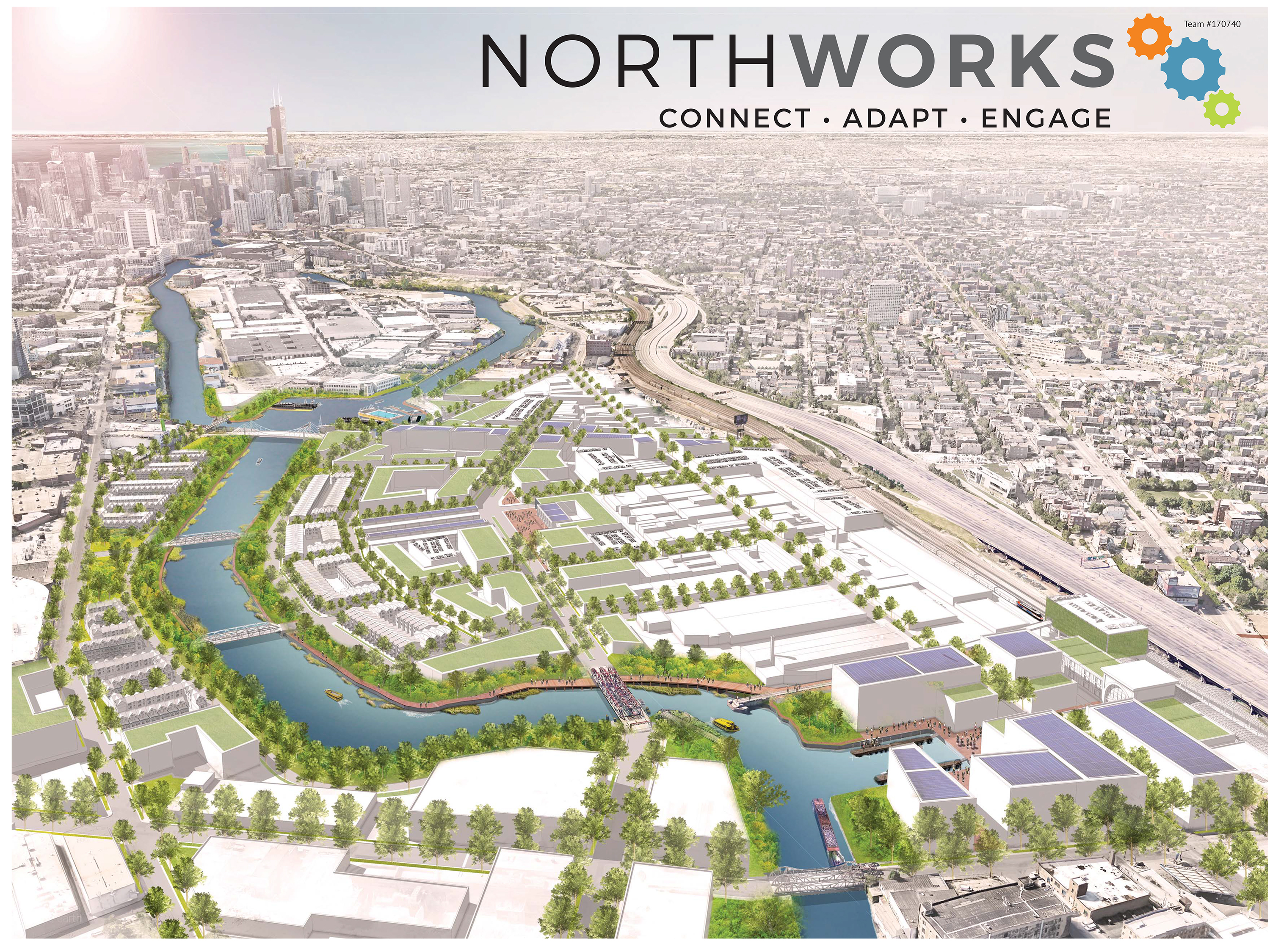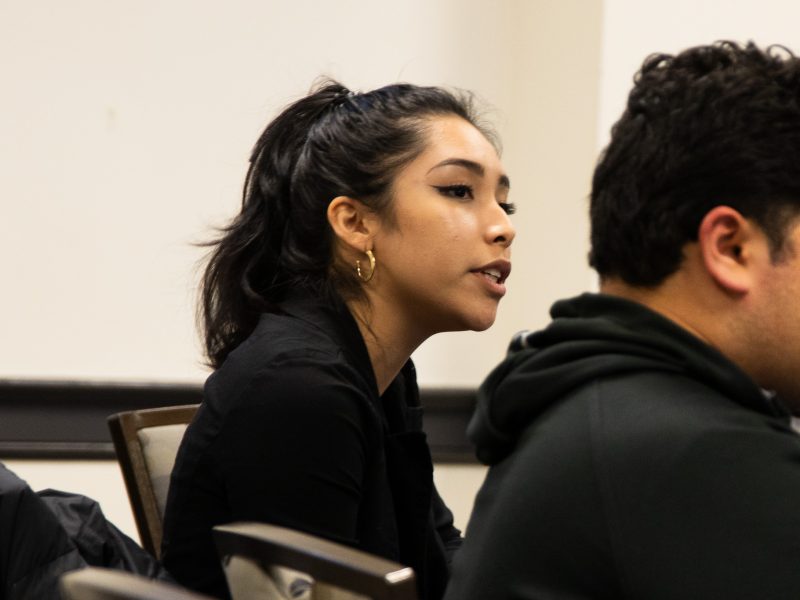Five graduate students in the architecture, planning and preservation school from the University of Maryland who are finalists in a national urban planning competition are visiting Chicago on Friday to visit a site for which they’ve created a comprehensive development scheme.
Jennifer Chorosevic, Pedro Sanchez, Peter Cunningham, Daniel Green and Alexis Robinson hope to win the 15th Annual Urban Land Institute Hines Student Competition, and the $50,000 grand prize that comes with it, in April. If they win, it will be this university’s third time in four years taking the title.
The competition called for creating a full graphic presentation, backed by projected finances, of how a team would establish an industrial district in Chicago. It also asked for an analysis of benefits of following through with the plan for the existing community, such as encouraging industry and increasing regional connectivity.
[Read more: University of Maryland students place first in urban design competition]
As one of the four finalists in the competition as of Feb. 21, the team — coined NorthWorks — is already guaranteed a $10,000 prize. Winning the competition would increase their winnings to $50,000, $5,000 of which automatically goes to this university. The significant financial benefit isn’t the only thing driving the team, though.
“Students have secured jobs simply because of their performance in the competition,” said Cunningham, a graduate architecture student.
There is also added pressure to prove this university, which won in 2014 and 2015 for its Nashville and New Orleans proposals, is still capable of performing as strongly as it has in the past.
“It’s the best kind of pressure,” Cunningham said, “because it also gave us confidence that with the skills we’ve learned at the architecture school, we’re prepared and capable.”
For the competition, the NorthWorks team spent two weeks over winter break designing a mixed-use sustainable area, which incorporates the river’s proximity to reduce the development’s footprint, in Goose Island, Chicago — a process that would normally take months. Within 15 days, the graduate students, who did not know each other beforehand, had to design an entirely new Chicago neighborhood with nothing to start from except the experience in architecture and urban development they learned at this university and the advice of their faculty advisors, professors Matthew Bell and Margaret McFarland.
“It’s an extremely intense, diverse and interdisciplinary process,” said Sanchez, a graduate architecture student.
Being thrust into such a high-pressure situation forced the team to put their communication, teamwork and time management skills into producing a plan that set them apart from the other 118 teams in this year’s competition. Chorosevic, the team leader, emphasized the “meticulous” detail they put into the financials — how much implementing the design would cost in real life — and graphic design of their proposal, and how focusing on the utility of the space made their development plan grounded in reality.
[Read more: UMD study: Urban planning could cut down on a city’s energy usage]
Despite the team’s confidence in their abilities, they were careful not to be dismissive of the Carnegie Mellon, Université Laval and University of Texas at Austin teams, who are also finalists in this year’s competition, Chorosevic said.
“They all made it to the finals for a reason, so we can’t underestimate them,” said Chorosevic, an architecture and real estate development master’s student. “We have to keep pushing the bar.”
Prior to making it into the finals, the team members spent 15-hour days working on their proposal over winter break. Now, they have to balance the competition with spring semester graduate courses.
The team will visit Chicago on March 10 to receive feedback from the competition’s 12 jurors and see the site for which they designed their development plan. After this, they will have until April 6 to work on their verbal presentation and refine their proposal based on their observations and the feedback they receive. Part of the refinement process involves studying previous finalists to see what worked and what didn’t.
Sanchez encouraged other students to involve themselves in collaborative competitions similar to this one.
This university’s success in the past, and NorthWork’s current confidence, is “a sign of how much we can actually do and accomplish with this education we’re getting,” Sanchez said.
CORRECTION: Due to a reporting error, a previous version of this article said the team included five graduate architecture students. They are students in the architecture, planning and preservation school, but not all are studying architecture. This article has been updated.



